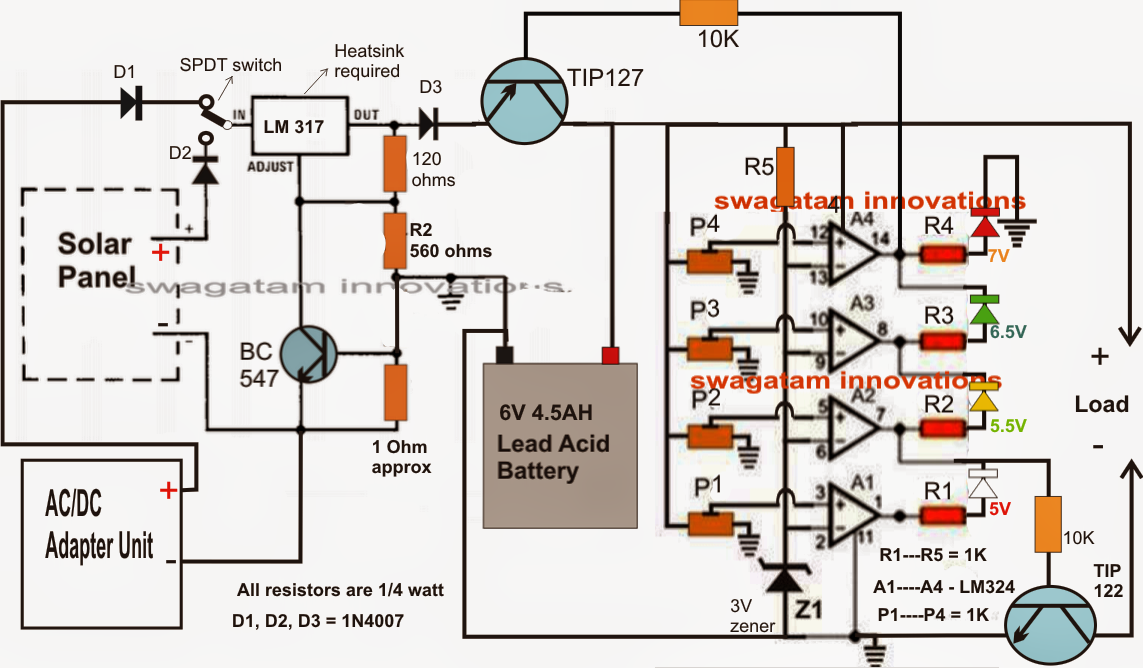

Press and hold the button - Connect unit to power supply - After 5 seconds, the unit will beep continuously - Release the button - Unit will give 6 beeps (setting maximum voltage) - Top LED will be on - Uit is now in CALIBRATE mode. You will need a variable power supply and a multi meter to calibrate the unit. Thus, before power saving the circuit will drain a 7Ah battery in about 2.8 days.Īfter power saving, it will take around 3.5 years for the circuit to drain the same battery. īy using the above power saving techniques, I was able to reduce the current of the circuit down from 80mA to as low as 0.12mA when the device is in SLEEP mode. More information about the power saving modes can be found at. Setting up the watchdog timer to wake up the MCU every 8 seconds, will ensure that the power used is even less. However, the MCU is no longer running, or in this case, measuring the voltage.Ī watchdog time is used to wake the MCU from SLEEP. In this mode, the MCU can draw as little as 0.001mA. In SLEEP mode, most of the MCU interfaces are turned off. Please change any delay() and Millis() values to actual ms values.īy placing the AtMega328P in SLEEP mode, one can further reduce the power. NOTE: If you do not want to change the config fuses, the MCU must run on an external 16MHz oscillator. However, the drawback is that the AtMega328P config registers needs to be programmed using AVRDude. I opted to use the internal oscillator running at 8MHz for the design, as it gives the best speed/power performance. NOTE: If you do not require the power saving, you can use a 78L05įrom the datasheets, the AtMega328P current can be dropped from around 10mA to 1mA by selecting the internal 8MHz oscillator, as compared to the external 16MHz crystal. But, by using a low drop out regulator like the LP2950 3.3V, this can be dropped to as low as 0.1mA. I opted for a 3.3V low drop out regulator.Ī standard 7805 regulator has a quesent current of around 20mA. Running the AtMega328P at 5V, uses more power than running at 3.3V. I used the following methods:īy pressing the button, the LED display is turned on, and automatically turns off the LEDs after 30 seconds. There are several ways to reduce the overall power used by the circuit.

LED Display - Adjustable maximum voltage level - Adjustable minimum voltage level - 3 Adjustable alarms (typically 50%, 30%, 20%) - Alarms to be non-irritating, and have a mute function - Minimum buttons - Low power consumptionįor my design, I opted for the AtMega328P micro. The aim was then to design a battery indicator with the following specifications: With a standard LM3914 battery monitor, the battery monitor itself will drain a 7Ah battery in about 46 hours. Lastly, the current drawn by circuits I have tested, ranged between 45mA and 150mA. However, add a second or third warning, this can become a problem. Using pots for adjustments, is the normal method used. If a low level warning is also required, this will then result in three voltage levels to be monitored.

The biggest difference is the required minimum and maximum voltage to be displayed. However, each person wants something a little different. With the use of 12V batteries becoming more popular (typically the 7Ah sealed lead acid), I have been requested several times to build a state of charge (SOC) meter displaying the voltage on LEDs.


 0 kommentar(er)
0 kommentar(er)
